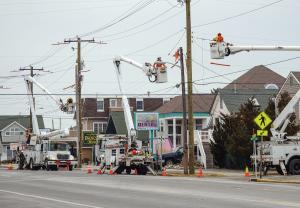Disaster shows the need for grid modernization. Is technology up to the challenge?
John D. McDonald is director, technical strategy and policy development, at GE Digital Energy.
Hurricane Sandy highlighted both the grid’s vulnerabilities and its potential. It’s worthwhile reviewing how and why that’s so, because it underscores the interests of utilities, customers, regulators and suppliers—the full range of stakeholders.

Such a review must acknowledge that no amount of technology or funding will guarantee the lights stay on during extreme weather events such as a massive hurricane. But in addressing how to harden the grid and make it more resilient in such circumstances, we’ll touch on the logic behind grid modernization and how it will improve power reliability and restoration in most conditions.
In that sense, Hurricane Sandy offers a catalyst for renewed thinking about—and commitment to—well-considered smart grid road maps, organizational change and, not incidentally, how to communicate the benefits to skeptical regulators and the public.
Hardening the Grid
First, let’s acknowledge the vulnerabilities exposed by the hurricane’s brute force. Storm surges sent seawater into coastal substations, forcing operators to shut them down or risk cascading faults. High winds and driving rain downed trees further inland, which took down power lines in familiar fashion. Physical damage reigned.

